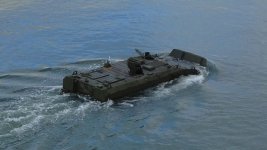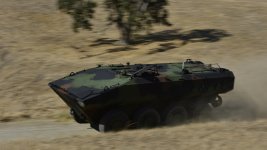Haligonian
Sr. Member
- Reaction score
- 382
- Points
- 880
GR66 said:No arguments on the tactical benefits of the Namer or Merkava I on the battlefield (although my understanding of the Merkava's troop carrying capability is that it's designed/meant for taking troops on board for short tactical advances rather than acting as a true APC), but are they practical for an expeditionary army like Canada's?
At 60+ tons we can only deliver one at a time on a C-17, so realistically we're looking at deployment by ship in order to deliver any meaningful sized force. Then being a heavy tracked vehicle we'd need tank transporters/trains to move them from the (possibly distant) safe port to the front.
I'm personally of the firm belief that the military threats from Russia/China are not invasion of Western Europe or our major Asian allies, but rather quick campaigns where they can muster localized superiority of forces in order to seize limited objectives before NATO/Western forces can respond. Is a slow to deploy heavy Canadian mechanized force able to respond in time to such a situation?
I'm not suggesting that there are no situations where Canada wouldn't have time to deploy a heavy force (planned interventions like Iraq or Afghanistan, Peace Keeping missions, or deterrent deployments like Latvia come to mind), but is that what our military should be fundamentally designed for? In most of those situations Canadian involvement is as much a political requirement as a military requirement and that need could possibly be filled by other types of forces that may be more effective in a true major power military crisis.
Like so many discussions on this Forum, I guess it again comes down to the fundamental question of what is the real purpose of the Canadian military, and how should it be organized and equipped to fulfill that purpose.
I thought about the sustainment and deployability issues but when it came down to it, rightly or wrongly, Canada likes to go to mature theaters where it can take its time getting in there or forward deploy. How many times have we deployed armoured vehicles by air? How many times have we done it at short notice? Were not going to be running anything like US Army SBCT's that are supposed to be able to deploy by C130 anytime soon. LAV 6 is too heavy now anyway!
Latvia would be a perfect on going current mission where a platform like Namer could be employed if we were willing to pay the sustainment costs with HETs being a major one.





